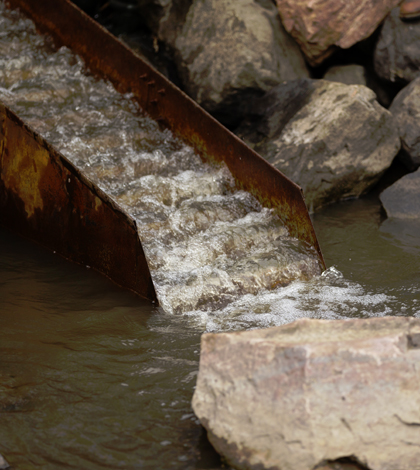Fish Ladders For South Dakota Streams
While fish ladders’ efficiency and effectiveness have been questioned over the past few years, the reality remains that more fish can bypass dams and other waterway obstructions when there is a fish ladder rather than when there is not. The Yale School of the Environment reports that less than 3 percent of one key species were able to make it upstream when obstructed by a dam, even with the installation of a fish ladder. While such a low number may be discouraging, fish passages and fish ladders mitigate the harm of necessary state infrastructure.
Despite debates, professors at South Dakota State University took it upon themselves in 2016 to design fish ladders for 18 culvert sites across South Dakota. The Water Network reports that, in particular, the researchers wanted to focus on making travel easier for small fish like minnows, darters and madtoms. Small-bodied fish have a harder time traveling up through culverts than large fish do. A culvert is a structure that redirects water past an obstacle or channels a below-ground waterway and may be placed above the anteceding stream or on the same level.
Small Fish; Big Problem
Small fish meet problems when the culvert is placed above the stream, leaving a gap they must jump in order to migrate upstream. These gaps can be anywhere from several inches to a few feet, a distance not jumpable by most small fish, particularly when the water level drops and fish do not have the strength to jump up the waterfall created by the raised culvert. This design effectively segments the habitat and harms migration, reproduction and population sizes.
The culvert discharge creates a pool on the downstream side which unfortunately begins to dry up during the summer months and traps small fish in a shrinking habitat. It was this exact issue that Brian Graeb and John Lorenzen sought to repair when they designed their fish ladder. The project was sponsored by the South Dakota Department of Game, Fish and Parks and by U.S. Department of Agriculture Hatch funds.
Results
Fortunately, Graeb and Lorenzen’s ladder design worked for the smaller species at the 19 sites tested. By creating a fish ladder that works, habitats are expanded, leaving much more space for the species present in impacted areas. The success of this fish ladder could impact wild fishery management as habitat fragmentation is a major concern for wildlife managers.
While much of the focus on mitigating culvert harm is centered on sport fish, these smaller and less popular fish are still crucial to the ecosystem. Katie Bertrand, an associate professor of natural resource management, points out, “A grazing minnow, like a Central Stoneroller, common at some of the sites where the ladder was tested, feeds on algae from the rocks and logs on bottom of the stream.” This behavior helps to minimize the impacts of runoff from agriculture and reduce algae in the stream.
The next step for the researchers will be deciding how often the ladders should be deployed and where. The ladders originally used in the study were deployed in culverts that ranged from 2 to 12 feet in diameter and a drop-off distance of 8 to 60 inches. The study was conducted for only 5 days, but in that short amount of time, 23 species of small fish pushed through the ladders, according to SDSU Research.
The team behind the revolutionary fish ladders is excited to see how this technology may be deployed at culverts across the country. But first, research is continuing as the team tries to create a more effective final product that can make the habitat available to all fish species.

Water flows down the fish ladder and allows small-bodied fish to move upstream. (Credit: South Dakota State University)

Pingback: FishSens Magazine | Vanishing Sockeye Salmon in Washington - FishSens Magazine